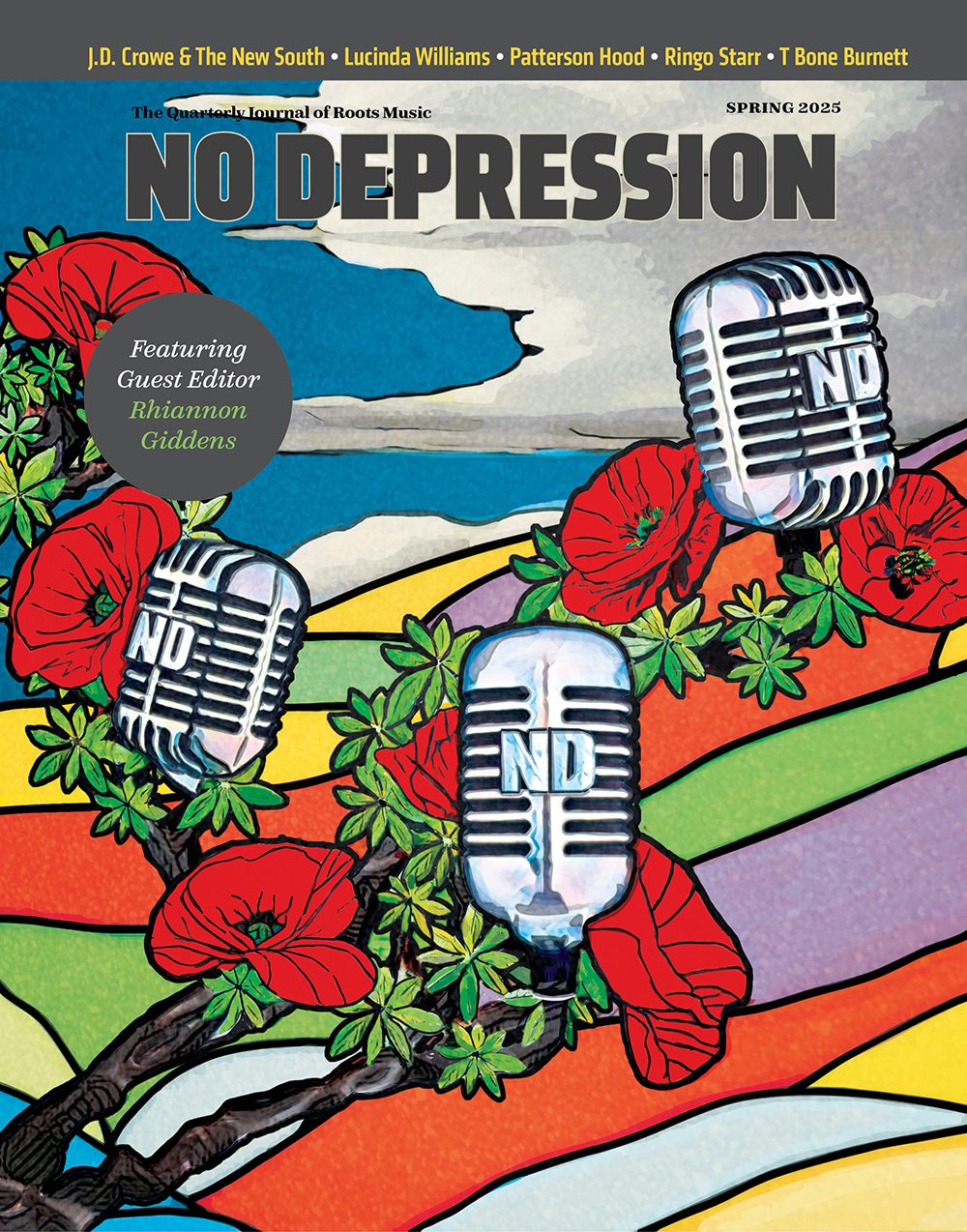Frank Black – Eugene skyline
“When Tiven told me about Charles, he sent me a CD with a bunch of songs on it,” Hood recalls. “Well, I was busy working on other stuff, and didn’t have time to work on the chord charts. Riding up to Nashville to do the session, I played the CD in the car, thought I’d figure these songs on the way up. When I started listening to them, I realized, hell, I can’t figure out these things out driving a car. The number system [a kind of notation, used by Nashville musicians, that assigns a numeral to each chord] would be pretty hard to use with his songs.”
Black expresses similar appreciation for the working methods of the players who appear on the two records. “I don’t think it was an enormous challenge for them; it was fun,” he says. “They were happy to be there. Cropper really got into it; he even left the studio during one song. He wanted to overdub his solo and get it right, and left while we cut the song and then came back and said [Black does a southern accent], ‘OK, I’m ready!’ And he was really, really into it.”
Somewhat improbably, Honeycomb and Fastman Raiderman initially came about as the result of a joke. In 1993, Tiven worked with Frank Black on an Otis Blackwell tribute album Tiven was producing. That was the first time the two had met, and they hit it off. “He was interested in making this record he called Black On Blonde,” Tiven says. “He wanted to go to Nashville and use seasoned, veteran musicians, make a traditional singer-songwriter record. It was in very general terms. We might have mentioned [drummer] Kenny Buttrey at the time.” (Buttrey, one of the session musicians on Blonde On Blonde, didn’t play on either of Black’s Nashville records; he died in September 2004.)
Black says the title was just a play on words, a useful conceit for an inchoate idea. He and Tiven kept in touch, and every so often Black would call up Tiven, and, as Black says, would ask, “‘Hey, Tiven, when are we gonna do our Black On Blonde?'”
Black says he “didn’t know who was gonna be playing on the record, if they were gonna be soul guys or country guys; all I knew is that it was going to happen in the 615 area code.”
The songwriting on Honeycomb and Fastman Raiderman reflects Black’s recent life, just as the compositions on a Pixies or a Catholics record give listeners a mediated yet intimate portrait of the artist. For all his odd meters and unexpected chords — no other songwriter seems so in love with jamming elements together, confounding harmonic expectations — Black takes a pragmatic, even reductive approach to his compositional methods.
When I ask him who of the classic ’60s and ’70s songwriters have been a major influence on his work, he replies, simply, “I can’t think of anyone.”
“I listen to music like anyone else: I like it or I don’t,” he continues. “I’m definitely not a student of songwriting, and whatever idiosyncratic behaviors I put into the song, I’ve done it long enough that I know when it’s gonna have a groove, when the math works out….My songs are just one little glimpse into that world, and so I don’t know how much method there is.”
This is reasonable enough, and a fairly typical Blackian answer. When I ask him what music from his childhood moved him, I get this response: “Anybody from that generation first heard pop music via the Beatles. They were the first big international pop group to penetrate.” Which is perfectly acceptable, but hardly revealing — a classic pop-star non-statement.
More illuminating is his admission of love for ’70s rockers Jethro Tull. “When I was about 13 years old, Tull were out promoting their new live double record, so on the radio you heard ‘Aqualung’ a lot,” he says. “That’s one of those ’70s bands you could trace the sound of, the vibe of Ian Anderson as a vocalist, to me. That kind of slightly folky, melancholic, grand, musing vibe — I can draw a line from that to a song of mine like ‘Los Angeles’ [from 1993’s Frank Black]. That’s my ‘Aqualung’.”
Black might not be a “student” of songwriting, and he might choose to talk about his work in the most practical of terms (“I write a bunch of songs every year, and here’s my recent batch,” he says of Fastman), but his art draws admiring comments from his musicians, and from no less a songwriter than P.F. Sloan, author of the ’60s classic “Eve Of Destruction”, who plays piano on the Fastman songs that were cut in Los Angeles.
“On ‘In The Time Of My Ruin’, what’s amazing about that song is that it’s basically a three-chord song structure,” Sloan says. “It goes through 99% of the song, and yet it holds your attention, spellbindingly.” Sloan, an avatar of 1960s west coast pop, says Black’s song structures, his transitions from section to section, remind him of the work of Jan Berry (of Jan & Dean) and John Lennon.
Joe Tex, John Lennon and Jan Berry are some kind of holy trinity, all coming together to produce music that deftly balances the mannered and the heartfelt. Black’s integrity and adaptability have something to do with it, of course.
Perhaps the only thing left for him to do is to get that custom-lettered tour bus, load up the family, and make the circuit with a few songs he wrote in the hotel room last night. Just make sure you try the whitefish sandwich on white bread, with mustard and hot sauce, next time you hit Nashville, Frank.
Edd Hurt lives near Nashville, on the outskirts of the southern baroque, and recommends the catfish sandwich at Joe’s Bar-B-Que & Fish in north Nashville. No extra hot sauce needed.




